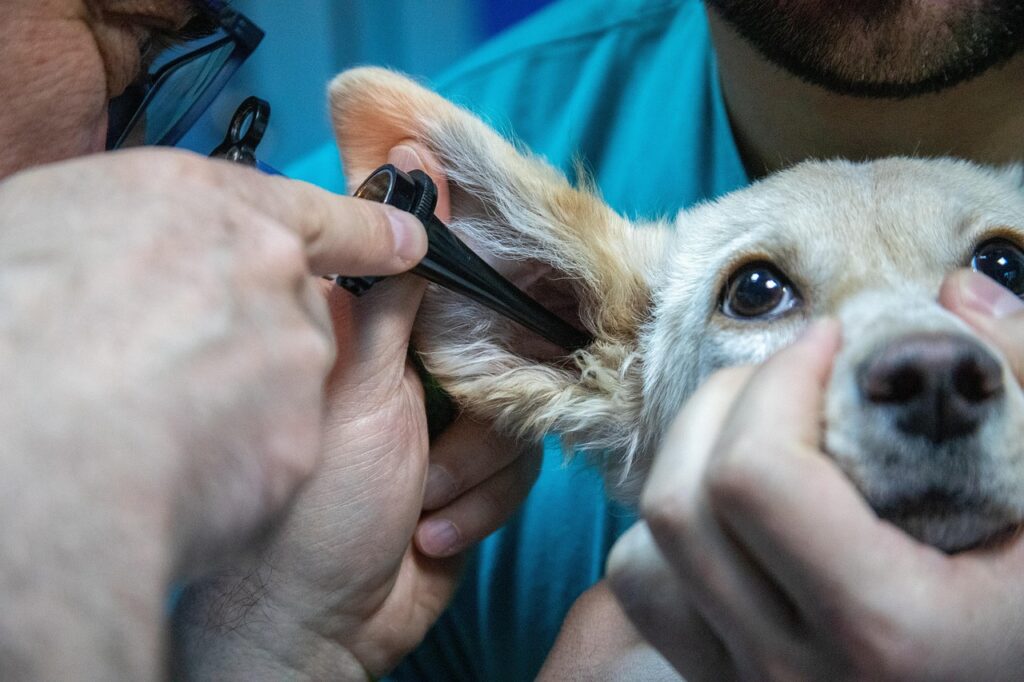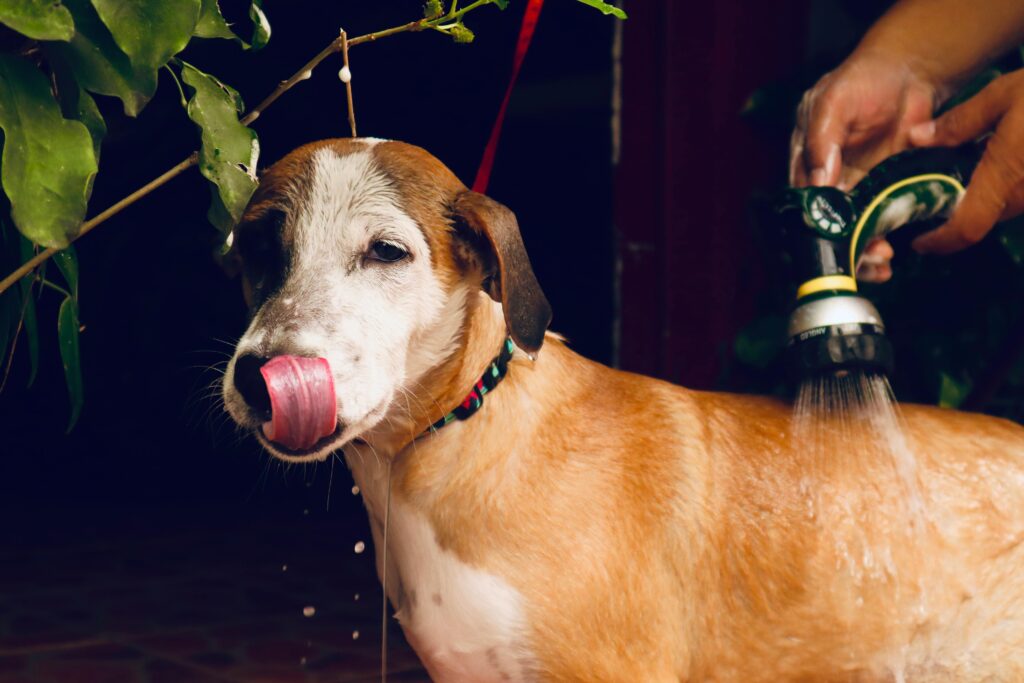If you’ve ever noticed your dog shaking their head, scratching their ears excessively, or emitting a strong odor from their ears, they may be suffering from a yeast infection. It would be wrong for us to ignore a yeast infection in our dog’s ears if it occurs. This is one of the most common ear problems in dogs, and while it can be uncomfortable, it is treatable with the right care.
I remember when my dog, Max, had his first ear yeast infection. At first, I thought it was just minor itching, but soon his ear became red, inflamed, and had a bad smell. After a visit to the vet, I learned how serious and uncomfortable yeast infections can be for dogs—but also how preventable they are with the right care.
In this article, we’ll cover:
What causes yeast infections in a dog’s ears
Signs and symptoms to watch for
How to treat a dog’s ear yeast infection
Home remedies and when to see a vet
How to prevent yeast infections from coming back
If your dog is constantly scratching their ears, read on to learn how to help them find relief.
What Is a Yeast Infection in a Dog’s Ear?
A yeast infection in a dog’s ear occurs when Malassezia yeast (a type of fungus) overgrows in the ear canal. While a small amount of yeast is normal, problems arise when moisture, heat, or allergies create the perfect conditions for yeast to multiply uncontrollably.
Dogs with floppy ears (like Golden Retrievers, Cocker Spaniels, and Basset Hounds) or those that swim often are especially prone to ear yeast infections because their ear shape traps moisture inside the canal.
Causes of Yeast Infections in Dog Ears
Yeast infections don’t just happen randomly—there’s usually an underlying cause that allows yeast to thrive. Here are the most common causes:
1. Moisture and Humidity
Dogs that swim frequently or have floppy ears are more prone to yeast infections because moisture gets trapped in their ears.
Prevention Tip: Always dry your dog’s ears thoroughly after swimming or bathing.
2. Allergies (Food or Environmental)
Allergies are one of the biggest triggers for ear yeast infections. Dogs with food or environmental allergies often have chronic ear inflammation, which leads to yeast overgrowth.
Common allergens include:
- Certain foods (chicken, beef, dairy, wheat)
- Environmental allergens (pollen, dust, mold, grass)
Prevention Tip: If your dog has recurrent yeast infections, talk to your vet about an allergy-friendly diet or allergy testing.
3. Poor Ear Hygiene
If a dog’s ears aren’t cleaned regularly, dirt, wax, and bacteria can build up, leading to ear infections.
Prevention Tip: Check and clean your dog’s ears weekly, especially if they have floppy or hairy ears.
4. Hormonal Imbalances (Hypothyroidism, Cushing’s Disease)
Dogs with hormonal conditions may have weakened immune systems, making them more prone to yeast infections.
Prevention Tip: If your dog frequently gets yeast infections, your vet may need to check for underlying health conditions.
5. Use of Antibiotics or Steroids
Prolonged use of antibiotics or steroids can disrupt the natural balance of bacteria and yeast, leading to overgrowth of yeast in the ears.
Prevention Tip: Only use antibiotics and steroids under veterinary supervision, and consider probiotic supplements to maintain gut and immune health.
Signs and Symptoms of a Yeast Infection in a Dog’s Ear
How do you know if your dog has a yeast infection in their ear? Here are the most common symptoms:
Constant scratching or rubbing of the ears
Head shaking or tilting
Red, inflamed, or swollen ears
Brown, yellow, or black ear discharge
Strong, musty, or “cheesy” odor from the ear
Crusty or scaly skin inside the ear
Sensitivity or pain when touching the ears
If your dog is showing these symptoms, it’s important to act quickly to prevent the infection from worsening.

How to Treat a Dog’s Ear Yeast Infection
If you suspect your dog has a yeast infection in their ear, here’s what to do:
Step 1: Visit the Vet for Diagnosis
A vet visit is necessary to confirm a yeast infection and rule out bacterial infections or ear mites. The vet may:
Examine the ear with an otoscope
Take a sample of ear debris and check it under a microscope (cytology test)
Once diagnosed, your vet will prescribe the best treatment based on the severity of the infection.
Step 2: Clean Your Dog’s Ears
Your vet may recommend a medicated ear cleanser to remove yeast, wax, and debris.
Use a vet-approved ear cleaner
Pour the solution into the ear canal (without inserting the bottle tip deep inside)
Massage the base of the ear for 30 seconds
Wipe away any excess liquid with a cotton ball
Never use cotton swabs (Q-tips) inside the ear canal—they can push debris further inside.
Step 3: Apply Medications (Antifungal Drops or Ointment)
Vets usually prescribe antifungal ear drops, ointments, or oral medications to kill yeast. These may include:
Miconazole or Clotrimazole (antifungal medications)
Corticosteroids (to reduce inflammation and itching)
Apply the medication exactly as directed by your vet for the full course of treatment.
Step 4: Monitor for Improvement
Most yeast infections improve within a week of treatment.
If symptoms persist or worsen, return to the vet for follow-up care.
How to Prevent Yeast Infections in a Dog’s Ear
Preventing ear yeast infections is easier than treating them! Follow these tips to keep your dog’s ears healthy:
Clean your dog’s ears weekly with a vet-approved ear cleaner.
Dry ears thoroughly after swimming or baths.
Identify and manage allergies (food or environmental triggers).
Feed a healthy, balanced diet to support immune health.
Schedule regular vet checkups to catch early signs of ear problems.
If your dog has chronic ear infections, ask your vet about long-term management plans to reduce flare-ups.
Final Thoughts: Keeping Your Dog’s Ears Healthy
A dog yeast infection in the ear can be uncomfortable, but with the right care and treatment, your pup can recover quickly.
🐾 Key Takeaways:
Yeast infections are caused by moisture, allergies, and poor ear hygiene.
Symptoms include head shaking, ear scratching, redness, and odor.
Treatment includes vet-prescribed antifungal medications and regular ear cleaning.
Prevent infections by keeping ears clean, dry, and allergy-free.
If your dog has recurring ear infections, work with your vet to find the root cause and create a plan to keep their ears healthy!




